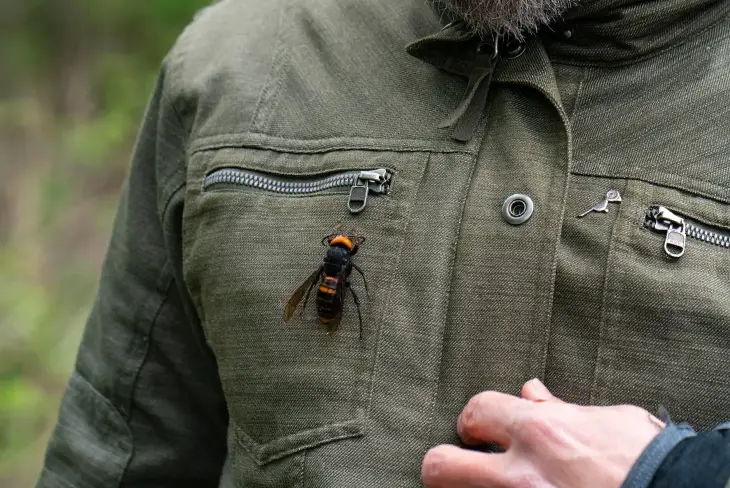
Fly Buzzing Around the House NYT: Understanding House Flies
Fly buzzing around the house can be more than just an annoying sound; it can indicate a potential pest problem. Did you know that house flies, scientifically known as Musca domestica, are among the most common insects found in homes? These pesky creatures thrive in environments where food and waste are present, making them a significant nuisance. In this article, we will explore various aspects of house flies, including their characteristics, life cycle, reasons for their presence, control measures, and the effectiveness of bug zappers.
Overview of House Flies
House flies are small insects that play a big role in our daily lives, often without us realizing it. They are typically gray or black and have four dark stripes on their thorax. Their bodies are slightly hairy, and they possess large red eyes. House flies are attracted to decaying organic matter and waste, making kitchens and garbage areas their favorite hangouts.
Common Characteristics
House flies are not just annoying; they also have some fascinating traits. They are about 1/4 inch long and can be found almost everywhere humans live. Their sponging mouthparts allow them to feed on liquids, including food residues and waste materials. This feeding behavior is not only gross but also dangerous because house flies can carry pathogens that contaminate food.
Life Cycle
The life cycle of a house fly is quick and efficient. It consists of four stages: egg, larva (maggot), pupa, and adult.
- Egg Stage: A female fly lays about 75 to 150 eggs at a time in moist organic material, such as garbage or feces. These eggs hatch within 8 to 24 hours.
- Larval Stage: The larvae feed on the decaying matter for about 3 to 7 days before they pupate.
- Pupal Stage: During this stage, which lasts around 3 to 6 days, the larvae undergo transformation into adult flies.
- Adult Lifespan: Once mature, adult house flies can live for about 15 to 30 days under optimal conditions.
This rapid life cycle means that if left unchecked, a few house flies can quickly turn into a large infestation.
Reasons for House Fly Presence
Understanding why house flies invade our homes can help us prevent their presence. Several factors contribute to their attraction to our living spaces.
Attractants
House flies are drawn to various substances that provide food and breeding grounds. Common attractants include:
- Food residues left on countertops or tables
- Garbage that is not disposed of properly
- Warm environments that facilitate breeding
These factors create an ideal habitat for house flies to thrive.
Seasonal Factors
Interestingly, the activity of house flies tends to increase during warmer months. As temperatures rise in spring and summer, so does their breeding rate. In fact, during peak breeding seasons, one female fly can lay hundreds of eggs, leading to rapid population growth.
Control Measures
Managing house fly populations requires a combination of prevention strategies and removal techniques.
Prevention Strategies
Keeping your home fly-free starts with simple yet effective practices:
- Always keep food covered or stored in airtight containers.
- Regularly clean your kitchen and dining areas to remove food residues.
- Dispose of garbage promptly and use sealed bins to prevent access.
By maintaining cleanliness and reducing attractants, you can significantly decrease the likelihood of a fly infestation.
Removal Techniques
If you find yourself dealing with house flies despite your best efforts at prevention, there are several removal techniques you can employ:
- Fly Traps: Sticky traps or bait traps can effectively capture adult flies.
- Insecticides: Sprays and baits containing insecticides can help reduce fly populations when used carefully.
- Natural Repellents: Essential oils like peppermint or eucalyptus can deter flies without harmful chemicals.
Using these methods in combination with preventive measures will yield the best results in controlling house flies.
Bug Zappers and Their Efficacy
Many people turn to bug zappers as a solution for pest problems. However, their effectiveness against house flies is questionable.
Effectiveness Against House Flies
Bug zappers work by attracting insects with ultraviolet light before electrocuting them. While they may kill many bugs, studies show that they do not effectively target house flies. Research indicates that only a small percentage of the insects killed by zappers are biting flies or mosquitoes. Instead, bug zappers tend to attract non-biting insects that may not be as bothersome.
Health Concerns
Another issue with bug zappers is the potential health risk they pose. When bugs are electrocuted, their bodies can explode into tiny particles that may carry pathogens. This aerosolized debris can spread diseases if it lands on food or surfaces where people eat.
Conclusion
In summary, understanding the behavior and control of house flies is essential for maintaining a comfortable home environment. By implementing effective prevention strategies and utilizing appropriate removal techniques, you can manage these common pests effectively. Remember that cleanliness is key in deterring house flies from invading your space.




